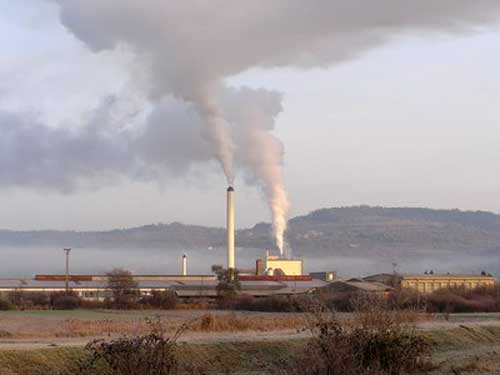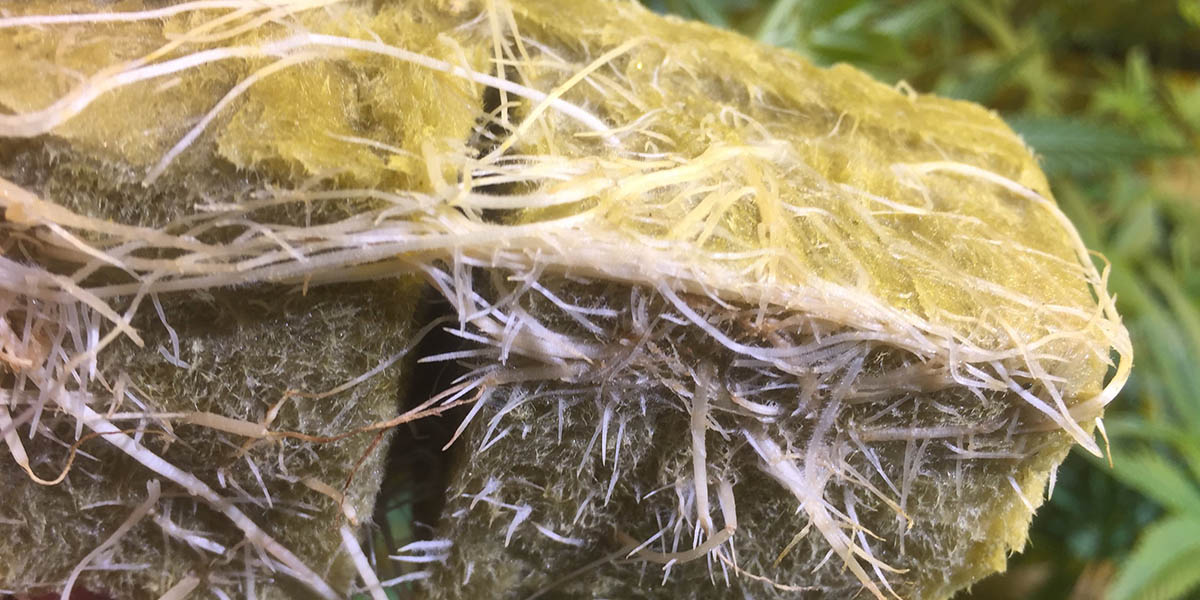For many decades now, Rockwool has been the cornerstone of the clone and hydroponic industry. Providing a sterile media with excellent oxygen retention, even while fully saturated, rockwool has always been a go to for many. But in light of the changing industry dynamics and ecological calamity of corporate pollution, it is now important to look closer at its manufacturing processes and waste stream and make hard decisions about changing our ways.
Environmental Hazards
As growers and farmers, trying to utilize capitalism while keeping the ecology in mind can be a daunting task. It can be a whirlwind of conflicting views and it’s important to understand how the companies we support impact our environment. Right now there is a big storm brewing over West Virginia and it’s highlighting the environmental problems. The Danish insulation company Rockwool announced its plan to construct a factory that is permitted to release a total of 310,291,620 pounds of regulated air pollutants annually in Jefferson County, WV and Loudoun County, VA. (FORBES). And what are some of the pollutants being emitted into the environment?
CO – Carbon Monoxide. Plays a role in ground-level ozone creation.
NOx – Nitrogen Oxide. Reacts with VOCs to form photochemical smog. Significant amount ends up polluting waterways.
PM 2.5 – Inhalable Fine Particulate Matter. Extremely dangerous, causes cancer, heart and lung problems, and premature death.
PM 10 – Inhalable Coarse Particulate Matter. Larger than PM 2.5, not quite as hazarous, but effects still ranging from respiratory irritation to cancer.
SO2 – Sulfur Dioxide. Associated with increased respiratory symptoms and disease, difficulty in breathing, and premature death. Acid rain precursor.
VOCs – Volatile Organic Compounds. Reactive carbon compounds that are precursors of photochemical smog. Rockwool is permitted to emit 6 VOCs that are known or suspected to cause cancer, including Formaldehyde, which is also a neurotoxin that damages memory, learning, behavior, and physical dexterity.
H2SO4 – Sulfuric Acid Mist. “Occupational exposure to strong inorganic acid mists containing sulfuric acid is associated with increased risks of laryngeal and lung cancer.” – U.S. NIH

Lead – Heavy metal neurotoxin. While Rockwool’s airborne lead emissions are small compared to other pollutants, no amount of exposure is safe for children and this must be fully vetted.
CO2e – Carbon Dioxide Equivalent. Not harmful.
HAPs – Hazardous Air Pollutants. WVDEP Fact Sheet / Preliminary Findings
Health Hazards
The main health issue for working with rockwool is that it may pose an inhalation hazard when dry. When it is wet, there is no inhalation hazard. The EPA has this to report: “Most studies in humans have not shown an increase in cancer from exposure to glasswool, glass filaments, rockwool, and slagwool. Animal studies have reported an increase in lung tumors in animals exposed to ceramic fibers by inhalation, while no increase in tumors was reported from exposure to glasswool, rockwool, or slagwool. The EPA has classified refractory ceramic fibers as probable human carcinogens. The International Agency for Research on Cancer (IARC) has determined glass filaments, glass wool, rock wool, and slag wool to not be classifiable as to their carcinogenicity to humans (Group 3).” EPA
HOWEVER, research from the Mesothelioma Justice Network has found other past research has linked several diseases with the inhalation or ingestion of some forms of mineral wool. Based on this research, mineral wool health risks include:
- Pulmonary fibrosis
- Tissue scarring
- Lung cancer
- Pleural mesothelioma
- Nonmalignant respiratory disease
“The effects of the fibers of glass wool and stone wool can be compared to those of asbestos. In the past, we did not know asbestos was very dangerous. The results of the effects of fibers in glass wool and mineral wool are only being seen right now, so we must deal with it carefully,” said Dr. Marjolein Drent, professor of interstitial lung diseases at Maastricht University.
How To Protect Yourself From Mineral Wool
The National Institute for Occupational Safety & Health (NIOSH) treats mineral wool like a hazard and still maintains the recommendations that were put into place in 2000 before mineral wool was determined “safe.”
According to NIOSH, workers should protect themselves by wearing:
- Breathing protection
- Eye protection
- Safety gloves
- Protective clothing
NIOSH also tells workers not to eat, drink, or smoke anywhere near a work site with mineral wool, and to prevent dust from dispersing. Just remember, ROCKWOOL POSES INHALATION HAZARDS WHEN DRY
COMPOSTING USED ROCKWOOL
While the Cannabis Horticultural Association (CHA) has never promoted the use of rockwool for horticultural purposes, it does recognize its widespread use and would like to at least draw awareness to the fact there are methods of composting rockwool. The next section covers 2 methods of composting and 1 trial result provided by a industry representative to provide a framework of understanding how to recycle rockwool via composting. ***The biggest concern we have with rockwool, is that it poses a VERY DANGEROUS INHALATION HAZARD WHEN DRY. It is important for anyone wishing to engage in these practices to understand this. It is of grave concern that farming practices that till the soil with composted rockwool might be exposing themselves to potential inhalation hazards.
1. Generator (Grower) Preparation
• Spent rockwool must be free of all potential contaminants including plastics (no clips, no twine, no plastic sleeves), trash, etc.
• If spent rockwool has excessive moisture, it should be allowed to dry out for a few days (dependent on climate conditions and weather). However, excessive dryness is not desired since the rockwool will eventually turn into a dust or powder which can become airborne. Ideal condition is “not too wet, not too dry”.
• If the grower has a tub grinder or even a wood chipper, the spent rockwool can be ground up (size reduced) with other green waste and organic materials. This is not required of the grower but will help in reducing the volume and weight of the material.
2. Green Waste Processor (Composter)
• Spent rockwool can be sized to a 1/4 minus screen using your existing compost grinders, augers etc.
• Composters should incorporate 10% rockwool to 90% green waste ratio by weight. The product breaks apart quite easily, and at 10% mixture, the rockwool will not be visible.
• By adding additional granulate (up to 25%), it can also lighten the bulk density of the compost product depending on the level of compaction. In general, large particles (>1 cm) will ventilate the compost while finer particles (<1 cm) may increase the water retention capacity.
3. Results from Composting Trials Using Spent Rockwool
• End of life Grodan rockwool, along with vegetation, including roots is an acceptable feedstock for windrow composting at the 10% rate.
• The compost from the Grodan windrow was indistinguishable from other compost produced at this facility.
• This feedstock met our quality standards and would fall under the definition of Agricultural Materials in Title 14 (California).
• Process: Windrow composting. Equipment Used: Vermeer TG7000 tub grinder and Doppstadt 720 trommel screen
b. University of California, Riverside, Department of Environmental Sciences, Contact: Dr. David Crohn, E-mail: [email protected]
• The addition of rockwool to green waste during the composting process did not have any negative impacts.
• In all cases, the addition of rockwool had no significant effect on either germination or plant growth.
• Used rockwool can be safely mixed with green waste feedstock at low volumes and can be composted.
• Process: Open windrow. Equipment used: medium sized commercial tub grinder (Morbark Model 1100) and further screened to 3/4″ fines
Consideration
CHA would like for people to comment on this article and share how they feel regarding these practices. Only when we come together as a community, can we decide how to impact large industries disrupting the ecosystems and our health. Based on the current breadth of knowledge regarding rockwool, it is advisable to begin seeking alternative solutions, like coco base hydroponic media and the bark based cloning media or soil based cloning techniques. We will begin to cover these topics more in depth as time goes on, like the sustainability of peat and the binding agents in the other plugs, but for now, hopefully a few eyebrows have been raised as the butterfly continues to flap its wings…
Want to try something other than rockwool? Give these Root Riot or iHort plugs a test drive….
Article by:
Russell Pace III – President of the Cannabis Horticultural Association


